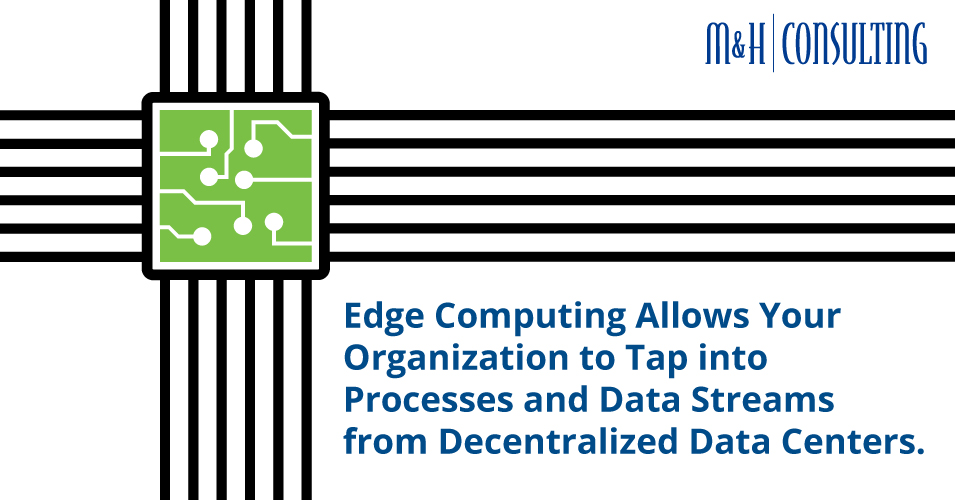While we have spoken many times about the advantages of cloud computing and moving some of your business’s data/processes into the cloud, there is another form of these digital distributions in the modern business landscape: edge computing.

What Is Edge Computing?
Like the cloud, edge computing allows your organization to tap into processes and data streams from decentralized data centers. However, when it comes to edge computing, some of that data is stored and kept on the “edge” of local networks instead of being completely decentralized.
What Are The Advantages of Edge Computing?
Reduced Bandwidth Costs
While the cloud has become streamlined, especially when it comes to working apps, such as Google Workspaces, it can still take a lot of bandwidth to connect and retrieve data from the cloud application. With edge computing, some of the functionality is located right at the edge of your local network, allowing you to tap into programs and data without using nearly as much bandwidth.
No Need For Constant Internet Connection
Cloud computing requires a constant internet connection to function properly (or at all). With edge computing, some of your applications may still run productively without a constant or limited connection. This has prompted many businesses to utilize edge computing within many of their daily operational processes.
Increased Processing Speeds
For functionalities that require near-instantaneous responsiveness, cloud computing simply can’t cut it. For example, remote control capabilities of robots or machines within manufacturing plants require low latency communication to function properly. When a machinist sends a signal to the robot, the robot needs to respond almost immediately for productive actions to take place.
With edge computing, this process happens almost instantly. If the signal had to first connect with the cloud, retrieve the data, and then communicate with the machine, then the process lags heavily.
What Are Some More Examples of Edge Computing?
There are many examples of edge computing that can be seen, possibly all around you right now. As our world becomes more interconnected via the IoT (internet of things), edge computing is increasingly becoming commonplace. This can be seen in the way that your many smart devices communicate with each other and in the business landscape, within robotics, automation, surveillance, and much more.
Examples include:
- FaceID on your iPhone
- Smart devices in your home, such as Alexa and Google Home, and the connected appliances (TVs, lights, doorbells, etc).
- Autonomous vehicles
- Advanced robotics
- Kiosk machines
- Military applications
- And many more!
Should My Company Utilize Edge or Cloud Computing?
Would it surprise you to know that the answer is both? In today’s digital world, computing technologies tend to work in tandem, picking up slack where the other falls short. These computing systems are interconnected, allowing you and your business to tap into faster processes, cutting-edge technology, and the most productive programs on demand.
Categorised in: edge computing
